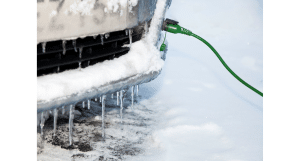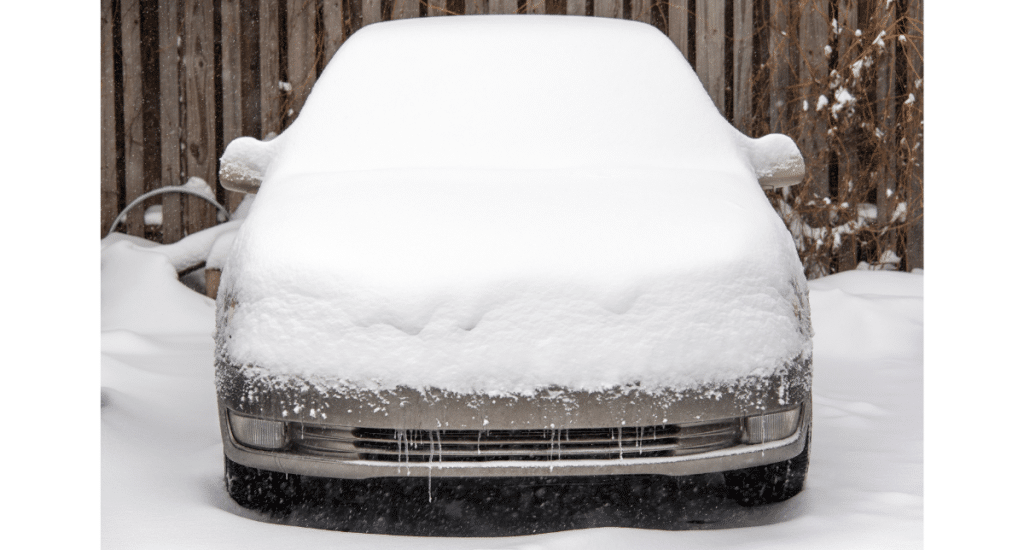As winter tightens its icy grip, starting your car becomes a cold challenge. Fear not! LEAP Driving School is here with a step-by-step guide to ensure a smooth ignition even in the coldest weather. Below is quick guide for car starting in cold winter conditions.
Check Your Battery:
Begin by inspecting your battery. Cold temperatures can significantly reduce its efficiency. Ensure its fully charged and consider a professional checkup if needed. Check the battery age, as most batteries have a life span of 3-5 years. Regular maintenance and timely replacement contribute to the longevity of your car battery and performance in the Canadian cold winter.

Use the Right Oil:
In the cold winter months, using winter-grade oil for your car becomes crucial to ensure optimal engine performance. Winter-grade oil is specifically formulated to withstand lower temperatures, addressing the challenges posed by cold weather conditions. Unlike regular motor oil, winter-grade oil has a lower viscosity, allowing it to flow more easily in colder temperatures. This improved flow helps the engine start smoothly and reduces the strain on various components during cold starts. Additionally, winter-grade oil maintains its fluidity even in freezing conditions, ensuring proper lubrication of engine parts and minimizing wear and tear. As a driving instructor in Edmonton, where winter temperatures can be harsh, recommending the use of winter-grade oil to your students is a valuable piece of advice to enhance their vehicle’s reliability and overall driving experience during the colder seasons.

Keep it Plugged In:
Invest in a block heater to keep your engine warm overnight. Plugging it in during extremely cold nights prevents the engine from freezing, making your morning start hassle-free. In the frigid winters of Canada, the use of a block heater is not just a convenience but a crucial tool for maintaining optimal vehicle performance. The extreme cold temperatures, especially in places like Edmonton, demand proactive measures to ensure that engines start smoothly and efficiently. Block heaters, when plugged in, keep the engine block warm, preventing the coolant and oil from thickening. This aids in easier starts, reduces wear on the engine components, and enhances fuel efficiency. For drivers in the Edmonton, Beaumont, and Sherwood Park areas, where winter temperatures can be severe, utilizing a block heater becomes a practical necessity. Embracing this practice not only ensures the reliability of vehicles but also aligns with a commitment to safe driving, considering the challenging winter conditions in Alberta. It’s a small investment that pays dividends in the form of improved engine longevity and overall driving confidence during the harsh Canadian winters.
Consider an Engine Block Heater Timer:
For added convenience, use a timer for your engine block heater. Set it to start heating the engine a couple of hours before you plan to drive, ensuring a warm start without unnecessary energy consumption.

Let the Engine Warm Up:
Once started, let the engine idle for a few minutes to allow the oil to circulate and reach optimal operating temperature. Avoid revving the engine excessively during this time. In the chilly winters of Canada, ensuring a proper engine warm-up is crucial for the optimal performance of vehicles. Our driving instructors in LEAP Driving School encourage their students to adopt a systematic warm-up routine which enhance their driving experience and contribute to vehicle longevity. We advise them to allow the engine to idle for a few minutes before setting out, enabling the oil to reach its optimal viscosity, and ensuring smooth operation. This practice not only aids in engine efficiency but also enhances safety by ensuring critical vehicle components are operating at their best in the harsh winter conditions. Incorporating such practical tips into your driving education content can serve as valuable guidance for drivers navigating the cold roads of Edmonton, Beaumont, and Sherwood Park.

Maintain Fuel Levels:
Keep your fuel tank at least half full during winter. This prevents moisture from forming in the fuel lines and ensures a smoother start.
In the harsh winter conditions of Canada, maintaining an adequate fuel level in your vehicle is paramount for safe and efficient driving. The extreme cold temperatures can lead to fuel line freezing, making it essential to keep the tank well-filled to prevent condensation and moisture buildup. Additionally, a fuller tank provides an extra layer of insulation, reducing the risk of fuel freezing in the lines. Regularly checking and topping up the fuel level becomes crucial, especially in areas like Edmonton, where frigid temperatures are common. This proactive approach not only ensures the reliability of your vehicle but also contributes to overall road safety during the challenging winter months. Moreover, it aligns with the principles of responsible driving, emphasizing the importance of preparedness in adverse weather conditions.

Conclusion:
Winter doesn’t have to freeze your driving plans. By following these tips, you’ll confidently start your car even on the chilliest mornings. For more expert advice and comprehensive driving guidance, trust LEAP Driving School Edmonton – your partner in safe and confident driving. Remember, safety first, even in the coldest weather!

